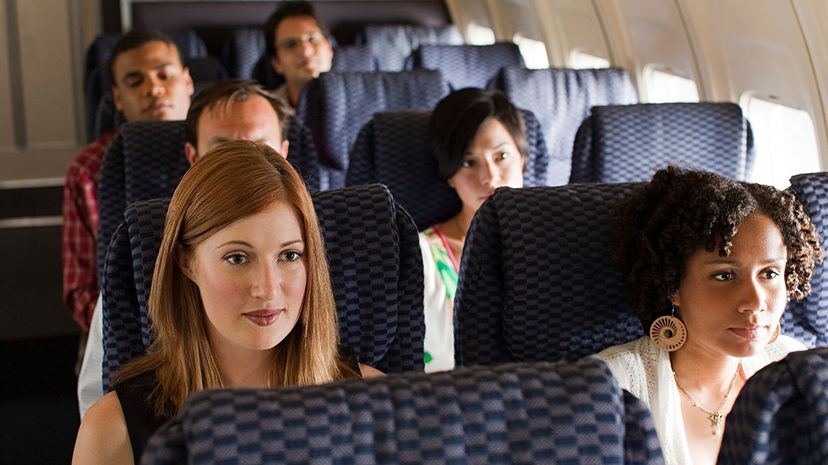
If you're feeling increasingly cramped on airline flights these days, you're not necessarily suffering fromclaustrophobia. In recent years, airlines have been redesigning cabin space and seats alike, in order to jam more and more passengers into planes and maintain profitability. And that means less room for your knees, as you've probably realized, but it also means less room for your upper body, face and head — especially when someone reclines the seat in front of you to take a snooze.
According to theMassachusetts Institute of Technology's Airline Data Project, U.S. airlines have increased the average seat count in their single-aisle, multi-class configurationaircraftfrom 130 in 1995 to 142 today. In order to fit all those seats into the plane and still preserve some leg room and knee room, airlines have gone to using thinner "skinny" seats. But something has to give. Seat pitch — the distance between a point on an airline seat and the same spot on the seat in front of it — has decreased significantly, from 35 inches (89 centimeters) back in the 1970s to an average of about 31 inches (79 centimeters) today, according to U.S. Sen. Charles Schumer, D-N.Y., who has sought to stop airlines from shrinking passenger space even further.
Advertisement
That means that when the person in front of you tilts the seat back, it's going to be several inches closer to your nose if you're sitting upright.
Stella Lourenco, an Emory University psychology professor who studies how people perceive and deal with personal space,told the Wall Street Journalthat the shrinking amount of headroom on planes could have a significant psychological effect on passengers, and not just ones who already suffer from claustrophobia. "It's a huge problem as seats get smaller and closer," she said.
Another psychologist, Martin Seif of the Anxiety and Phobia Treatment Center for White Plains Hospital Center in New York, told the Journal that higher-density seating could raise the risk of passengers losing their tempers and even causing "air rage" incidents.
Unfortunately, the trend of putting more seats into airliners and reducing the amount of passenger space seems to be continuing. And don't expect federal regulators to step in. In April 2016, the U.S. Senaterejectedan amendment to a spending bill by Schumer, which would have required the Federal Aviation Administration to set a minimum seat size and distance between seat rows on airplanes. Time to get to know your neighbors even more intimately!
Advertisement



